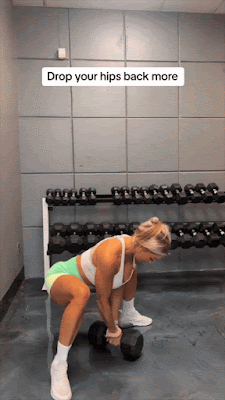Here are 15 leg workouts you can do at home:
1. Squats: Stand with your feet shoulder-width apart and squat down as if you were sitting in a chair, keeping your back straight and chest lifted. Push through your heels to return to the starting position.
2. Lunges: Step forward with one foot and lower your body until both knees are bent at a 90-degree angle. Push through your front heel to return to the starting position and repeat on the other side.
3. Bulgarian Split Squats: Stand a few feet in front of a chair or bench with your back facing it. Place one foot on the chair behind you and lower your body until your front thigh is parallel to the ground. Push through your front heel to return to the starting position.
4. Calf Raises: Stand with your feet hip-width apart and raise your heels off the ground as high as you can. Lower back down and repeat.
5. Glute Bridges: Lie on your back with your knees bent and feet flat on the floor. Lift your hips off the ground until your body forms a straight line from your shoulders to your knees. Squeeze your glutes at the top and lower back down.
6. Step-Ups: Stand in front of a sturdy chair or bench and step up onto it with one foot. Push through your heel to lift your body up onto the chair, then lower back down and repeat on the other side.
7. Wall Sits: Stand with your back against a wall and lower your body until your thighs are parallel to the ground, as if you were sitting in an invisible chair. Hold this position for as long as you can.
8. Jump Squats: Perform a regular squat, but instead of standing up straight, explode off the ground and jump as high as you can. Land softly and immediately lower back down into the squat position.
9. Side Lunges: Step out to the side with one foot and lower your body until the thigh of your bent leg is parallel to the ground. Push through your heel to return to the starting position and repeat on the other side.
10. Single-Leg Deadlifts: Stand on one foot with a slight bend in your knee and hinge forward at the hips, lowering your torso until it's parallel to the ground. Keep your back flat and return to the starting position.
11. Wall Leg Raises: Lie on your back with your legs extended up against a wall. Lower one leg down towards the ground, then raise it back up to meet the other leg. Repeat on the other side.
12. Donkey Kicks: Get on your hands and knees with your wrists under your shoulders and knees under your hips. Lift one leg up towards the ceiling, keeping it bent at a 90-degree angle. Lower back down and repeat on the other side.
13. Fire Hydrants: Get on your hands and knees with your wrists under your shoulders and knees under your hips. Lift one leg out to the side, keeping it bent at a 90-degree angle. Lower back down and repeat on the other side.
14. Pistol Squats: Stand on one leg with your other leg extended out in front of you. Lower your body down into a squat position on one leg, then push through your heel to return to the starting position.
15. Box Jumps: Stand in front of a sturdy box or bench and jump onto it, landing softly with your knees slightly bent. Step back down and repeat.
These exercises target various muscles in your legs, including your quadriceps, hamstrings, glutes, and calves, helping you build strength and endurance from the comfort of your own home.
.gif)











